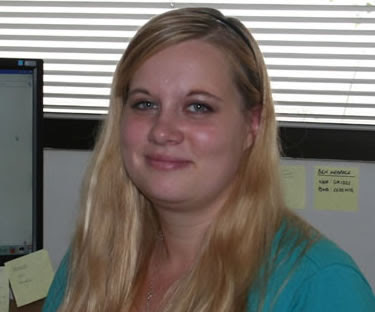
Institución: Universidad de Chile
Áreas de Investigación:
Estudios de enanas café y sistemas planetarios.
- Email: adjones@das.uchile.cl
- Fono: (56 2) - 977 1130
Avril Day-Jones
The number of ultracool dwarfs discovered is increasing rapidly, largely in thanks due to large area surveys (e.g. 2MASS, UKIDSS, SDSS, SuperCOSMOS). However this relatively new area of sub-stellar physics is not well understood and many questions are still unanswered. Such as, how they form?, what is their evolutionary path? and are these affected by factors such as metallicity? The answers to these tell us about the initial mass function and formation history, which are the most important observational results produced by the process of galactic star formation. By measuring these two observational cornerstones we can start to answer these questions, which will in turn provide a test bed for our theoretical understanding of these processes. Measuring these distributions however is a major challenge for such cool objects. Spectroscopic studies of ultracool dwarfs have revealed that their atmospheres have the correct conditions for the formation of dust condensates, including methane and water vapor, which act as sources of opacity making modeling difficult. Indeed the current atmospheric models have only limited success in reproducing observations with any level of accuracy.
What is needed is a set of benchmark objects, which have well calibrated properties, such as temperature, gravity, age, metallicity and mass. These can be used as aids to refining the models. The aim of my research is to identify a population of benchmark ultracool dwarfs, whose main properties (age, distance, metallicity) are inferred from membership of a binary system, where the primary member is a star with a well calibrated age. For this purpose the focus will be on searching for ultracool dwarfs as companions to white dwarfs and subgiants stars, whose physics are relatively well understood. The research makes use data from the most recent large scale surveys (2MASS, UKIDSS, SDSS, SuperCOMOS) along with our own independent searches to identify such benchmark systems. We aim to establish a way to infer the physical properties of ultracool dwarfs from photometry alone, which is becoming increasingly important as current and near-future deep optical and near infrared surveys (e.g. UKIDSS, VISTA) identify larger and fainter populations of ultracool dwarfs that will be harder to follow-up from the ground. These benchmarks will help to provide a way to measure the properties of the ultracool population in the galaxy from their basic observable characteristics alone.
Estudios
- Licenciada en Astrofísica, Universidad de Hertfordshire, Reino Unido (2004)
- Magíster en Investigación Astrofísica, Universidad de Hertfordshire, Reino Unido (2005)
- Premios
- Membresías
- Fondecyt Postdoctorado 2010.
- Visiting Research Fellow, Universidad de Hertfordshire (ganado el año 2010)



